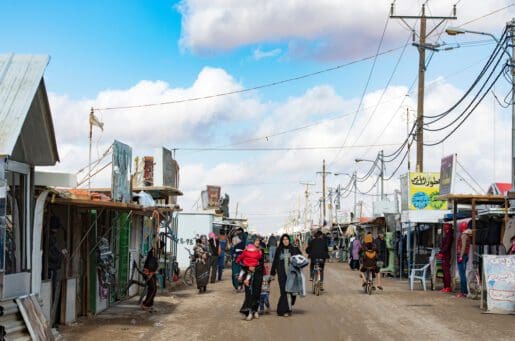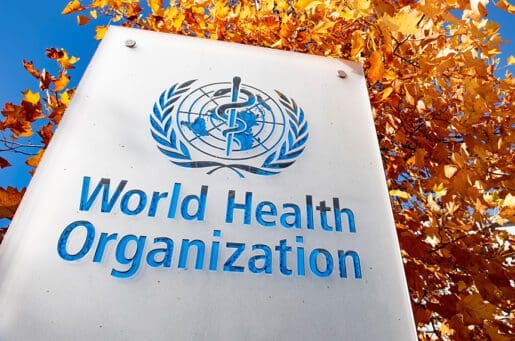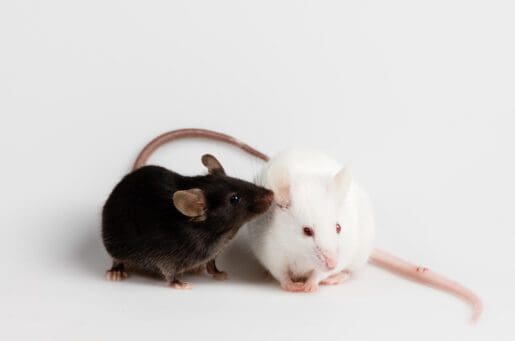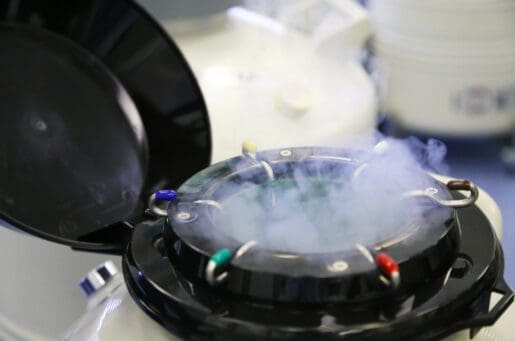Bioethics Forum Essay
Race, Research, and Bioethics: The Chapatis Studies
The history of biomedical experiments on Indigenous, Brown, Black, and other people of color is long, painful, and sordid. They reveal racialized notions of bodies and a disregard for ethics affecting the autonomy, dignity, and respect of individuals and communities. Ethical questions about one such study resurfaced recently with a thread on social media that described an experiment on iron deficiency funded by the Medical Research Council (MRC) in the United Kingdom during the 1960s that asked 21 Indian Punjabi women to consume chapatis laced with a radioactive isotope.
In the thread, historian and author Louis Raw asked whether the research subjects had given informed consent. Given lingering uncertainty, a member of Parliament asked for an inquiry and a parliamentary debate.
This research first became public in 1995, when Deadly Experiments, a TV documentary, aired in the U.K. In response to the public outrage that followed, the MCR formed a committee to establish, among other things, whether procedures for obtaining consent and experimental techniques were reasonable for the time period. The MRC report raised several bioethical questions. Despite its diverse membership– including an Asian doctor, a rabbi, and an ethicist–the committee did not unravel the racialised and gendered assumptions that may have underpinned these experiments.
The report didn’t reflect on the fact that the chapatis study was the only one, among nine listed in the documentary, where the subjects were exclusively ethnic minorities. General practitioners recruited 20 women who had consulted them for minor ailments. Pritam Kaur, one of the women interviewed in the documentary, said she was not told she was a research subject and that if she had known, she wouldn’t have participated. The deception continued when the patients were driven periodically to a facility several hours away. They were led to believe that they were going to a hospital when in fact they were taken to the Atomic Energy Research Establishment to have the radiation in their bodies measured.
These practices raise the specter of therapeutic misconception, a risk when physicians adopt the dual role of clinicians treating patients and researchers conducting studies and use, or potentially misuse, their influence and trust to recruit patients as research subjects. This dual role can interfere with informed consent.
In the documentary, an MRC representative claimed that the research council had obtained informed consent. However, the subsequent MRC report concluded that informed consent processes were suboptimal, but not for reasons of deception. The explanation was more banal –information may have been lost in translation because children were often used as translators. Moreover, a Gujarati translator was employed for a predominantly Punjabi population. The word for chapatiis roti in Punjabi.
We interpret this finding to be evidence that the researchers had a cavalier attitude toward the research subjects, seeing diverse Asian populations as homogenized, stripped of their distinct languages and identities. Also, these research subjects embodied multiple intersectional disadvantages–they were citizens of a former British colony, knew little English, were young, and often depended on their families to navigate their way in a new country. While the report calls them volunteers, the voluntariness was questionable given the lack of full informed consent and their social positions.
We believe that the MRC enquiry was not conducted properly since it failed to acknowledge the possibility of physical harm, loss of dignity, and lack of autonomy to the research subjects, given the absence of informed consent and the use of deception. Further, they possessed multiple intersectional vulnerabilities.
The new inquiry by the Coventry MP, Taiwo Owatemi, is a step in this direction. At the outset, MRC must acknowledge that what happened was unjust and unethical. For the current inquiry to lead to meaningful change, there should be serious attempts to trace and apologize to the research subjects and their families. If a subject is no longer alive, the apology should be directed to the next of kin. In the 1990s, the MRC claimed that tracing subjects was not possible, but in 2023– in a digital world where almost anyone anywhere can be traced–this should be possible to achieve. An apology should be followed by a financial compensation to the research subjects or their next of kin.
These two steps are particularly important for restorative justice because they signal to the broader community that the MRC acknowledges the harms from its study. These steps can also help rebuild trust among ethnic minority groups in Britain, especially following the Covid pandemic and its disproportionate effect on Black, Asian, and other ethnic minority communities. Excess morbidities and mortalities among these groups have highlighted structural racism and inequities.
In addition to helping perpetuate health disparities, prejudices against minority groups play a major role in the exclusion of these groups from medical research in high-income countries. In 2008, the most recent year for which this data could be found, only 0.1% of trials listed in the national research register in England included South Asian populations, even though they constituted nearly 6% of the population.
For equity and good science, greater research participation is required from different communities since a diverse research pool produces more robust as well as more optimally targeted therapeutics. Acknowledging the wrongs that were done decades ago may encourage greater participation from underrepresented groups in research today.
While financial compensation may not undo the damage that occurred–an argument often used to justify not recompensing victims–we believe that compensation will help ensure procedural justice in future medical research. Compensating victims of a research project that used deception will signal that those who use unethical research methods will be held accountable. As James Baldwin said, “Not everything that is faced can be changed, but nothing can be changed until it is faced.”
Sreeparna Chattopadhyay, is an associate professor at FLAME University in Pune, India @Sree_socscience
Sualeha Siddiq Shekhani, is an assistant professor at the Centre of Biomedical Ethics and Culture, SIUT, Karachi, Pakistan. @Sualeha2













It is very unfortunate to learn that these vulnerable people undergone such a horrific thing in the name of “treatment”. Therapeutic Misconception is really being used even today for things not purely counted as medical care or treatment for the benefit for patients. It is very disturbing to know that how experimental participants thought those food items were but they were means to an end, not meant for their benefit.
Recognizing the intersection of law and bioethics in the context of historical injustices is a moral obligation. This agreement lays out a series of actions designed to rectify past transgressions, foster ethical research practices, and promote the increased involvement of underrepresented groups in medical research.
The disparities brought to light by the COVID-19 pandemic, with its disproportionate impact on Black, Asian, and other ethnic minority communities, have underscored the pervasive influence of structural racism and health inequities. It is deeply disheartening to witness the paternalistic attitudes of some researchers who choose to disregard the unique linguistic and cultural aspects of their study subjects for their own advantage. This article rightfully exposes the profound influence of racial biases in shaping our perceptions of bodies, resulting in an ethical neglect that has inflicted harm on individuals and entire communities. The cumulative impact of such biases has understandably bred distrust within ethnic minority communities towards the field of medicine, which has, for generations, made them feel less valued.
I firmly believe that the proposed steps outlined in this article are not just essential but imperative in the pursuit of restorative justice. This article rightly underscores the significance of acknowledging past injustices as a pivotal aspect of restorative justice. Such acknowledgment not only serves as a testament to the wider community that organizations like the MRC are willing to confront their past transgressions but also commits to making amends.
Taking steps to address historical wrongs is an opportunity to reestablish trust and encourage greater participation from underrepresented groups in medical research. This inclusive approach is not only essential for promoting equity but also for advancing the frontiers of scientific knowledge.
It is devastating to read about the injustices that were committed in the pursuit of advancing medical knowledge. I agree that there must be a way to repair the harm and damage caused to the victims. However, any proposed resolution should include prioritizing the reduction of bias within the research staff.
I would like to suggest some ideas to help further protect patients and future participants. In research, there should be a distinction between being the patient’s clinician and being the investigator of a trial. This information should always be disclosed to a patient. Once an investigator is involved in a trial, there should be an independent party that is reviewing the patient population that is being recruited and enrolled. This team member should be the one to approach the patient.
Team members should actively question why certain participants being observed more than others and whether the trial is being conducted to benefit a specific population. Furthermore, team members should be comfortable assessing whether certain groups are being targeted due to their perceived vulnerability or reduced resistance to questioning the motives behind their enrollment.
While the article initiates a vital dialogue about past mistakes there must be a commitment among researchers and medical staff to uphold a higher standard of education aimed at addressing internal biases during patient recruitment for research. In this research, the cultural bias is seen when a Gujarati speaker was brought in instead of a Punjabi speaker. Analyzing trials like this one and identifying the specific type of bias involved can serve as an effective method for illustrating to researchers and clinicians how bias occurs and what steps can be taken to mitigate it.
By incorporating these measures, alongside issuing apologies and providing compensation, we can work towards fostering a more ethical and inclusive research environment that places paramount importance on the well being and autonomy of all participants.